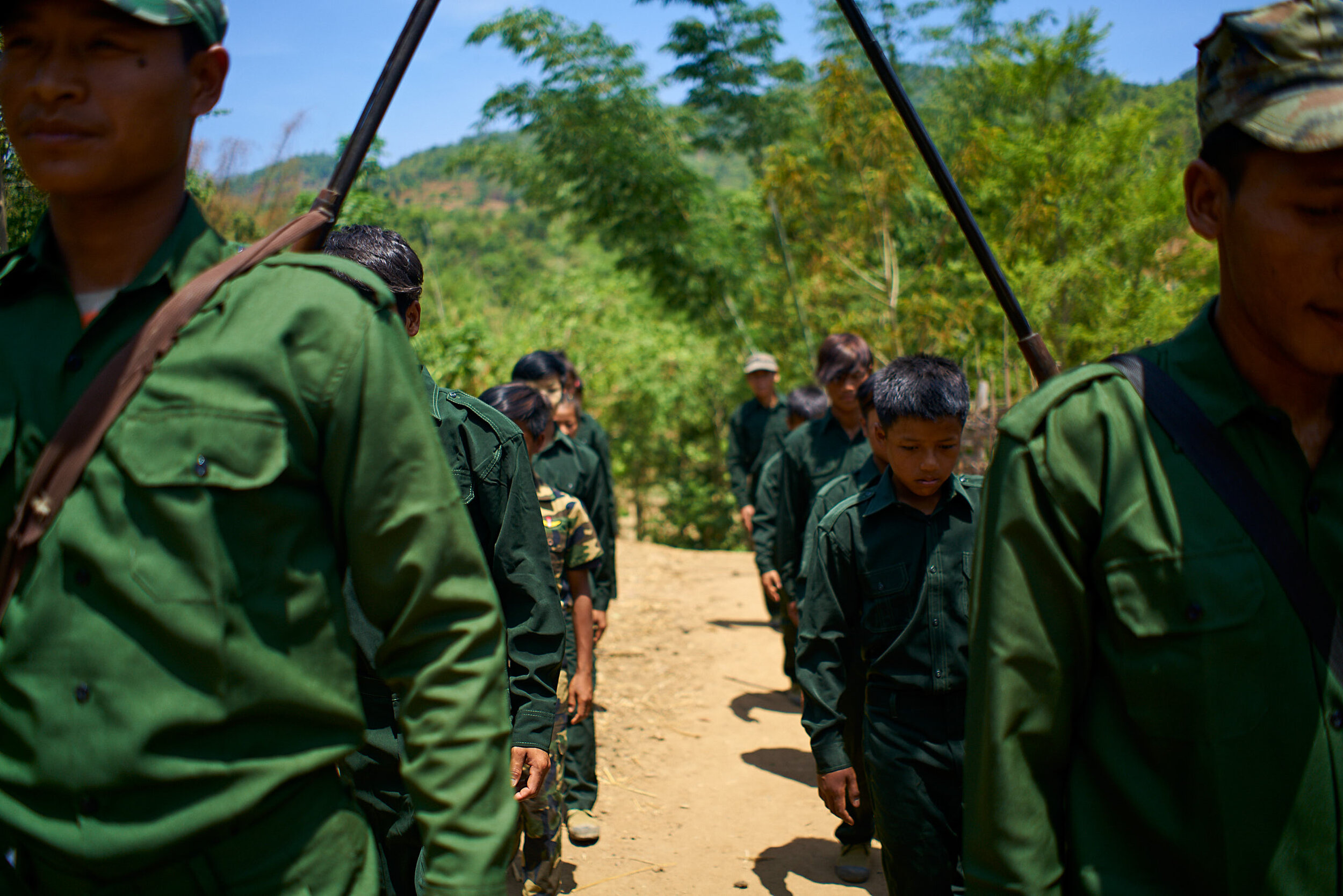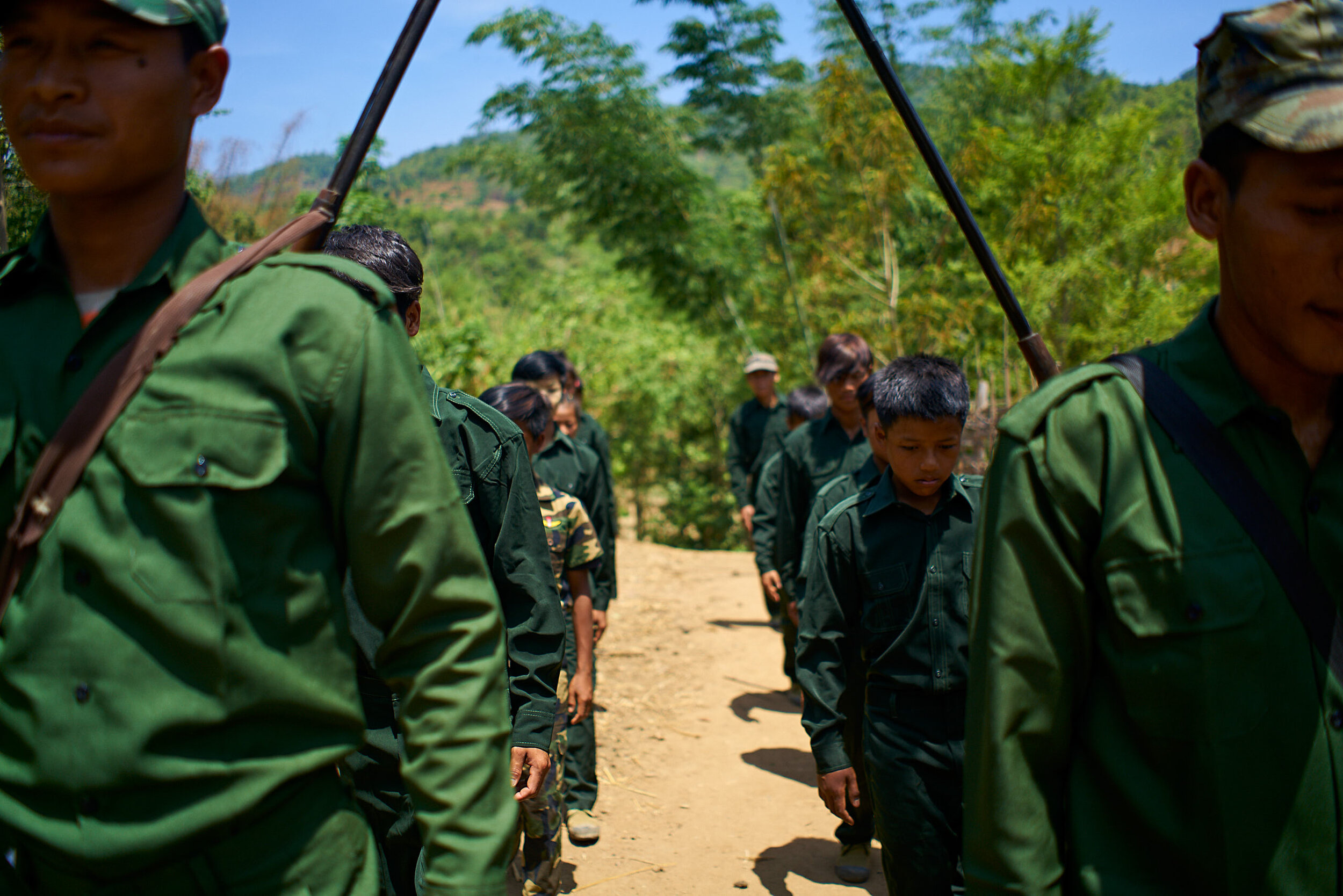Photo by Bryon Lipincott
Geopolitics & Burma
China is in everyone’s global spotlight, even though Myanmar is the one bleeding. China has three motivations regarding Myanmar:
-
India Ocean access
-
No western influence on its Yunnan border (no social uprising sparks)
-
Cheap natural resources
How far will China extend its interests? Will it take a clear and active role? Will it annex more of Myanmar like it has with the Wa Special Region, which has become somewhat of a vassal state within Myanmar? These are key questions.
Key Factors
Ethnic groups ring Myanmar’s borders like a giant horseshoe. They tend to live in mountainous areas, the “hill tribes” that surround the richer lowlands valleys of the Bamar. This surrounding, little known ethnic populous, an entire third of Myanmar’s overall population, has long discomforted the lowland peoples of Myanmar. This is especially true of the military, which predominately interprets them as a threat.
Some insurgent coalitions like Karen National Union (KNU), the Restoration Council of Shan State (RCSS), and the Chin National Front (CNF) are building an inclusive resistance government together with the Bamar under the CRPH, or as some say, the Burmese Government in Exile. This cross-cooperation is fresh and hopeful.
Another positive observation by some people at ground zero is the emergence of a younger generation of resisters, surprisingly supported by an older generation who chose to endure totalitarianism. This generation is fighting back, and it is more open to blurring the borderlines of racial ethnicity for mutual freedom.
A Key Actor
The UWSA (United Wa State Army) should be considered here. It is heavily aligned with China and therefore is currently friendly towards the Myanmar Army. The UWSA has an estimated 30,000 trained troops. There are another 30-60,000 militia that can be called up. And those figures do not include the 10-15,000 child soldiers in the camps. They are the most powerful of the ethnic groups. They could shift the tide if they stepped forward to unite the ethnic groups. It is a remote chance, but would be a game changer. The Myanmar Army would be forced into negotiations.
There are several cracks in the armor of the UWSA:
-
Many of the Wa’s business interests (Hong Pang Group) are spread throughout Myanmar. Yangon Airways, for example is owned by General Bao’s son (Bao is head of Wa State). This younger generation is concerned about the economics of Myanmar and more friendly to a democratic movement.
-
The United Wa State Army has 5 “divisions” deployed along the Thai-Burma border. Strategically this Southern Wa Region should be considered as it has leanings toward Aung San Suu Kyi and the democracy movement.
Key Actions
-
The positive impact that comes from sanctions is small. One of the challenges is the local people suffer from this in the long haul. Sanctions should be shorter term and very specific.
-
Backing ethnic minorities insurgents is very tricky but can’t be dismissed from the conversation because ethnic unity with the Bamar people is key to countering the military coup.
-
Small, agile NGO’s and local groups along the Burma/Thai border and within Myanmar should be funded sufficiently at this time. You will see the high impact from working with actors on the ground who know the space and can make decisions blending international and local perspective.
Our own NGO, INfire, developed its expertise in conflict, human trafficking and discrimination spaces. Our network of leaders and NGO’s are in response mode in Myanmar now. Our network of allies in justice have capacity to navigate, accomplish the task and consult you through the endemic issues that advocates arriving fresh on the scene would blunder through.
There is acute need for basic relief, food, water, shelter, especially in the Karen State right now. You can give to our work directly here or reach out for more information.



